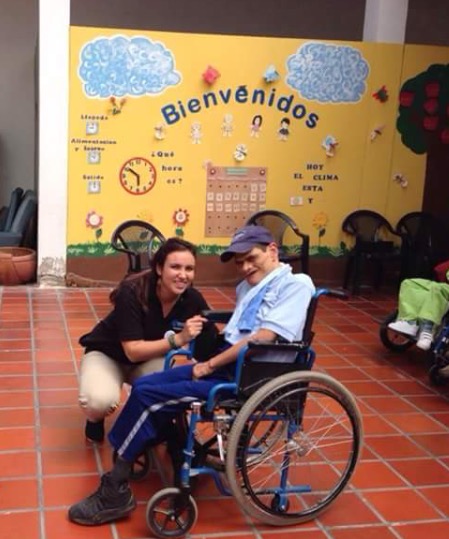
Ever considered volunteering your skills as a healthcare professional while traveling abroad? As occupational therapy students at Grand Valley State University, Kayleigh and Allie had the opportunity to participate in an occupational therapy-based mission trip with Centro de Rehabilitación, Educación, Capacitación, Estudios y Recursos, Inc.(CRECER) to Equador. Read their inspiring story!
Ecuador is a South American country with four distinct areas of biodiversity, including the Pacific coastal, Galapagos Islands, Amazon Rainforest and Andes Mountains. Spanish is the official language, and the currency is the US dollar. Ecuador is rich in Latino culture, Hispanic cuisine and family-centered communities. Interdependent relationships within families and communities are common. Although Ecuador promotes free healthcare, a disparity exists in remote regions. Small communities and rural areas lack access to healthcare and many families cannot afford to travel to larger cities. Prior to the development of CRECER, occupational therapy services did not exist in Ibarra, Ecuador.
During our 2014 fieldwork education with CRECER, our mission was to provide occupational therapy services to the town of Ibarra, Ecuador. Interventions were provided at two local nursing facilities, an adult day-care program, orphanage and a pediatric clinic. We were the only local healthcare option for many of the clients. Our responsibilities included educating clients and their families, fabricating orthotics to promote joint alignment, exploring alternative wheelchair positions and providing adaptive activities to offer meaning to individuals with physical disabilities.
The experience was eye opening in that it revealed the distinct customs within Ecuadorian relationships. Our findings are directly applicable to the clinician-consumer relationship in any rehabilitation setting. For the people there, the goal was not to pursue independence with activities of daily living, but rather interdependence among patients and their families. Family members take great pride in caring for their child with a disability. Parents were not interested in interventions to facilitate independence with dressing, feeding or bathing; therefore, caregiver goals were focused on improving meaningful play and leisure activities so parents could better interact with their children. This experience fostered professional growth. We learned to respect family dynamics and to create custom, family-centered goals. Similar to other facets of rehabilitation, goals were developed among the patient, the family and the therapist.
Diagnoses treated included cerebral palsy, autism, developmental delay and Down syndrome. Our treatment intervention was heavily focused on sensory integration. We provided patients with treatment ideas to develop fine and gross motor skills.
During our time at the nursing home treatments focused on improving performance of activities of daily living. We introduced specific, client-centered activities, such as nail painting for the women and dancing to traditional Spanish music for the residents and staff.
Lastly, we treated patients at a day rehabilitation center where we provided client-centered treatment by using the resources available to create games and educational activities for the men and women.
The physical and emotional responses of the individuals who received help were incredible throughout the various settings. The motivation we were able to provide broke down some pre-existing emotional barriers. Despite the language barrier, we noticed strong positive emotional responses as a result of the individuals trying new activities and succeeding in ways that they may not have previously found possible. Individuals cheered and initiated new ideas and activities upon realization of their own capabilities.
For more information on international endeavors, please visit the ASHT International page.

